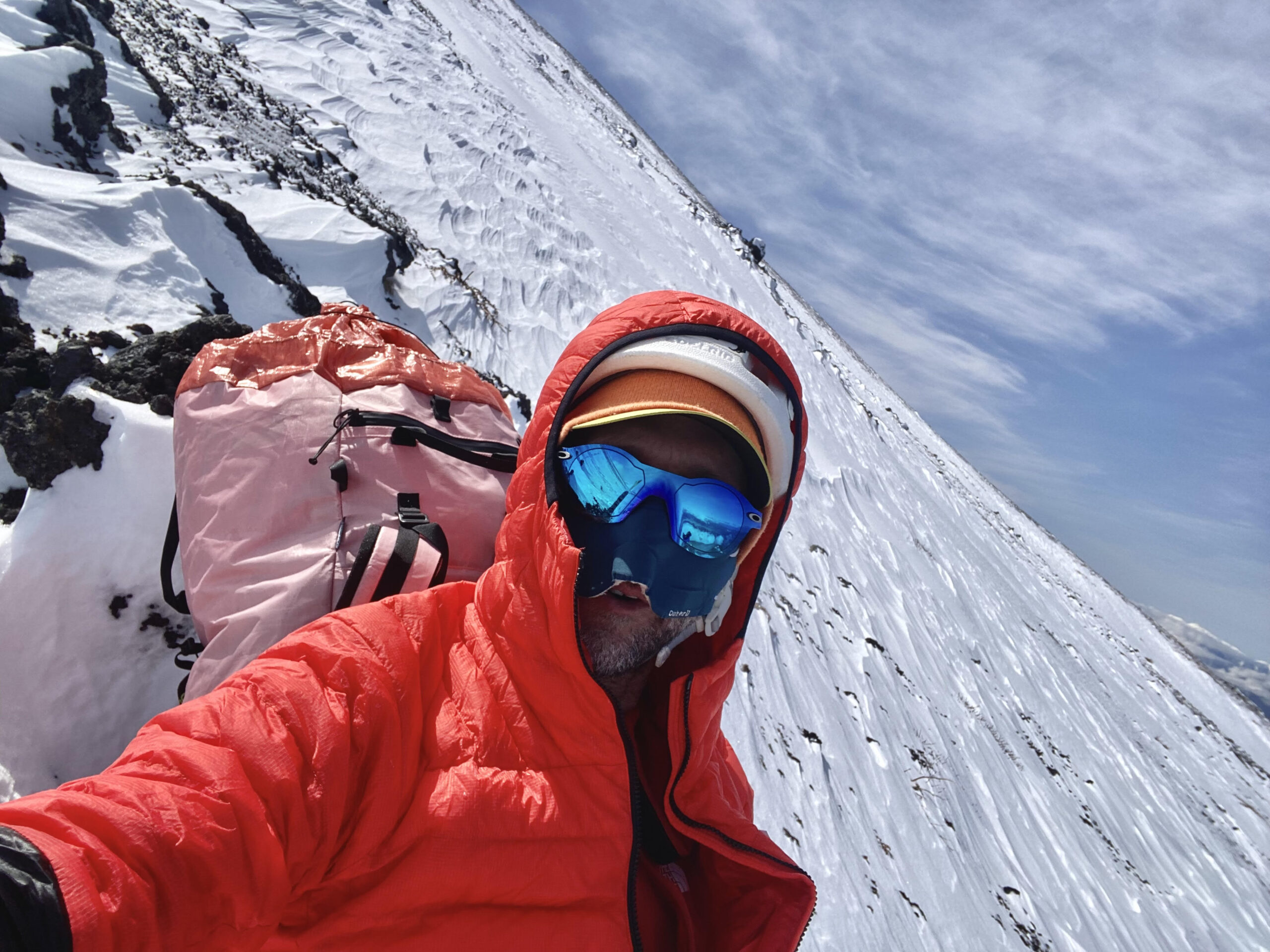Climbing Mt Fuji in winter, it’s the gear that makes the difference.
Mt Fuji is colder than you imagine. It’s also higher, windier & more like a Himalayan peak than it appears in the photos. We know because we climb them. The same rules apply to climbing Mt Fuji in winter as to any other cold peak; go light, go warm & go simple.
Our trips are based upon what we have seen work and not work over dozens of trips in all conditions, and over 25 nights spend high on the slopes.
We supply the necessary hardware like crampons, axes & helmets. This is what you need.


01
BOOTS
Crampon Compatible & Warm
Alpine boots are not trekking shoes, and need a welt at the heel to take crampons. 3 season alpine boots are adequate but double boots are the best, especially for overnight.
*can be supplied at additional cost
02
INSULATED CLOTHING
Jacket & Gloves
Mt Fuji is really cold and needs a good down jacket for when we stop and insulated mid-layers the rest of the time.
You will want a few pairs of gloves, and the smart climbers wear mitts.
03
FACE PROTECTION
Wind, Sun & Cold
Frostbite is not unknown on Mt Fuji, and the constant wind and exposure soon damages any exposed skin. Buffs tend to just freeze, and the best protection is a neoprene mask or an Airtrim from Vapro.
04
PACK & OTHER STUFF
Light, Simple & Minimal
The best packs are lightweight and around 50L, making them easy to use in the wind. Inside you need room for the provided gear like helmet and crampons.
05
Headtorch
Strong with a Red Light
Most Mt Fuji trips start, end, or both in the dark, and the approach demands good lighting. Make sure your torch has fresh batteries as the cold kills them fast, and ideally a red light to retain your night vision.
06
food
2000kcals
We recommend real food, and lots of it. Convenience stores are OK but Japanese supermarkets are better, to load up on bars, sandwiches, onigiris & snacks. This sort of climbing wants carbohydrate and a bit of fat, and most people find salty stuff better than sweet.
07
water
Enough but not too Much
Start hydrated by drinking in the car, then 2L should be enough. Any more is too heavy. Bladders freeze, so the solution is a couple of small bottles, carried horizontal in your pack so they won’t freeze.
08
overnight
Sleeping in Extreme Cold
We provide specialist high altitude tents and stoves, but you need your own sleeping bag, insulation mat & eating stuff. Nights are very cold, but fine with the right gear, such as bags rated to -10c and maybe even two mats.
